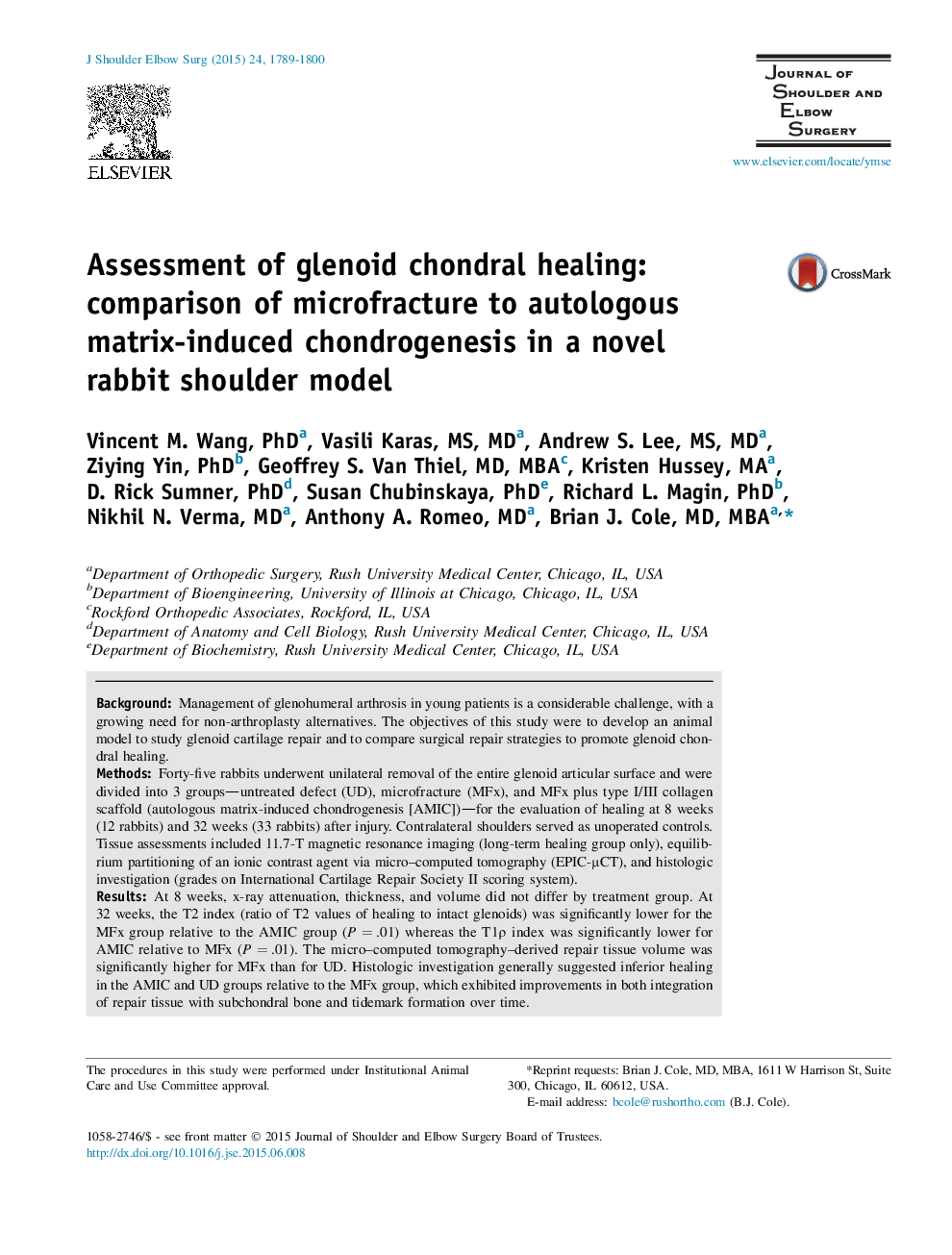| کد مقاله | کد نشریه | سال انتشار | مقاله انگلیسی | نسخه تمام متن |
|---|---|---|---|---|
| 4073267 | 1266977 | 2015 | 12 صفحه PDF | دانلود رایگان |
BackgroundManagement of glenohumeral arthrosis in young patients is a considerable challenge, with a growing need for non-arthroplasty alternatives. The objectives of this study were to develop an animal model to study glenoid cartilage repair and to compare surgical repair strategies to promote glenoid chondral healing.MethodsForty-five rabbits underwent unilateral removal of the entire glenoid articular surface and were divided into 3 groups—untreated defect (UD), microfracture (MFx), and MFx plus type I/III collagen scaffold (autologous matrix-induced chondrogenesis [AMIC])—for the evaluation of healing at 8 weeks (12 rabbits) and 32 weeks (33 rabbits) after injury. Contralateral shoulders served as unoperated controls. Tissue assessments included 11.7-T magnetic resonance imaging (long-term healing group only), equilibrium partitioning of an ionic contrast agent via micro–computed tomography (EPIC-μCT), and histologic investigation (grades on International Cartilage Repair Society II scoring system).ResultsAt 8 weeks, x-ray attenuation, thickness, and volume did not differ by treatment group. At 32 weeks, the T2 index (ratio of T2 values of healing to intact glenoids) was significantly lower for the MFx group relative to the AMIC group (P = .01) whereas the T1ρ index was significantly lower for AMIC relative to MFx (P = .01). The micro–computed tomography–derived repair tissue volume was significantly higher for MFx than for UD. Histologic investigation generally suggested inferior healing in the AMIC and UD groups relative to the MFx group, which exhibited improvements in both integration of repair tissue with subchondral bone and tidemark formation over time.DiscussionImprovements conferred by AMIC were limited to magnetic resonance imaging outcomes, whereas MFx appeared to promote increased fibrous tissue deposition via micro–computed tomography and more hyaline-like repair histologically. The findings from this novel model suggest that MFx promotes biologic resurfacing of full-thickness glenoid articular injury.
Journal: Journal of Shoulder and Elbow Surgery - Volume 24, Issue 11, November 2015, Pages 1789–1800
